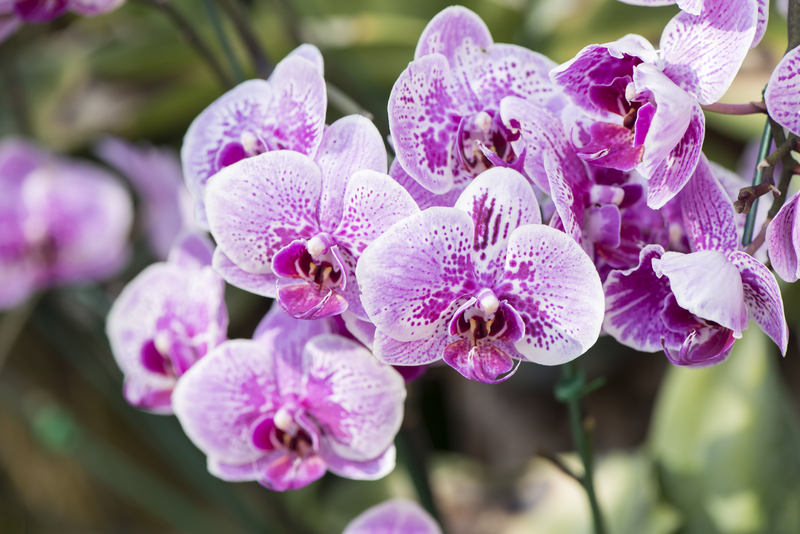Best Edible Herbs and Greens That Thrive in Sunny Window Boxes
Looking to bring a touch of greenery and delicious flavor into your home? Planting a window box packed with edible herbs and greens is a fantastic way to enjoy fresh produce even in small spaces. Not only do these plants offer endless culinary opportunities, but they also enhance the view and purify your indoor air. Sunny window boxes make the perfect home for a vibrant assortment of herbs and greens that flourish in bright light. In this comprehensive guide, you'll discover the top edible herbs and greens for sunny window boxes, tips to maximize production, and expert advice on maintaining lush, thriving plants year-round.
Why Choose Edible Herbs and Greens for Your Window Box?
Cultivating a mini kitchen garden right on your window sill comes with incredible benefits:
- Fresh Flavor at Your Fingertips: Harvest herbs and greens moments before cooking for unbeatable taste.
- Space-Efficient: Even the smallest apartments can accommodate a sun-drenched window box.
- Air Improvement: Many herbs purify the air, removing toxins and producing oxygen.
- Health Boost: Homegrown greens are packed with nutrients and free of potentially harmful pesticides.
- Cost Effective: Grow your own instead of buying expensive supermarket herbs.
- Decorative Charm: Lush, trailing greens and vibrant herbs add beauty to any room.
For sunny window boxes, choosing the right varieties is crucial. Let's explore which herbs and salad greens absolutely thrive when given plenty of sunlight.

The Best Edible Herbs for Sunny Window Boxes
Edible herbs are the backbone of most kitchen gardens. Here are the top contenders specifically adapted for bright, sun-filled locations:
1. Basil (Ocimum basilicum)
Perhaps the ultimate window box herb, basil craves warmth and sunlight. Varieties such as Genovese, Thai, and Lemon basil all do exceptionally well on a bright sill. Give each plant at least 6 hours of direct sun and regular pinching for bushy growth. Enjoy basil in salads, pastas, pizzas, and even desserts!
2. Chives (Allium schoenoprasum)
With their slender, tubular leaves and mild onion flavor, chives are a must for sunny window boxes. They're compact, resilient, and come back every year. Snip fresh chives for soups, potato dishes, or creamy dips.
3. Parsley (Petroselinum crispum)
Both flat-leaf (Italian) and curly varieties flourish with full sun. Parsley is a nutritional powerhouse loaded with vitamin C, vitamin K, and iron. Its robust flavor enhances everything from sauces to salads. Regular harvesting encourages fast regrowth.
4. Thyme (Thymus vulgaris)
Thyme's creeping habit makes it excellent for the front edges of your window box. It requires minimal water, plenty of sunlight, and rewards you with intense, earthy notes for roasting meats, vegetables, and Mediterranean dishes.
5. Oregano (Origanum vulgare)
No pizza or pasta night is complete without fresh oregano. This sun-loving herb is tough, drought-resistant, and offers aromatic leaves year-round. Pinch back frequently to maintain a bushy shape and prevent flowering.
6. Rosemary (Salvia rosmarinus)
Offering a bold pine aroma, rosemary is perfect for window boxes that receive steady sun. While slow to germinate, young nursery plants adapt well to containers. Use rosemary with roasted potatoes, breads, and hearty stews.
7. Sage (Salvia officinalis)
Sage's striking silvery-green leaves add texture and unique flavor to your culinary creations. This herb appreciates sun and air circulation, making it ideal for the trailing edge of your box. Use in stuffings, sauces, and teas.
8. Mint (Mentha spp.)
While mint can overtake a garden bed, in a contained window box, its exuberance is easily managed. Enjoy the freshness of peppermint or spearmint in teas, desserts, and cocktails all year. Keep the soil evenly moist for the happiest mint plants.
9. Cilantro (Coriandrum sativum)
Cilantro loves sun yet doesn't like intense heat, so positioning is key. Grow it in early spring and fall for the best results. Use cilantro leaves for salsas and curries, and don't forget to save the seeds (coriander) for aromatic cooking.
10. Tarragon (Artemisia dracunculus)
This fragrant herb adds a touch of anise flavor to eggs, chicken, and fish. French tarragon is the prized variety for culinary use--grow it in a bright window box for easy daily harvests.
The Best Edible Greens for Sunny Window Boxes
When it comes to window boxes, many leafy greens do remarkably well in full sun--providing fresh salads and healthy smoothies every day. Here are some top edible greens for sunny spots:
- Lettuce (Lactuca sativa): Opt for loose-leaf and cut-and-come-again types for fast, continual harvests.
- Spinach (Spinacia oleracea): Needs sun but will benefit from partial afternoon shade if your window gets extremely hot.
- Arugula (Eruca sativa): Thrives in sunny containers and is ready to harvest rapidly, offering peppery flavor and nutrition.
- Swiss Chard (Beta vulgaris subsp. vulgaris): Offers colorful stems and broad, soft leaves rich in vitamins and minerals.
- Kale (Brassica oleracea): 'Baby' kale grows well in containers for tender, quick-harvest leaves.
- Mustard Greens (Brassica juncea): Add a spicy kick to your salads and sandwiches, and flourish in well-drained, sunny spots.
- Mizuna & Asian Greens: These provide unique flavors and tolerate heat--perfect for a varied, global window box garden.
Choosing the Right Greens for Your Space
When selecting which salad greens to include, focus on varieties labeled for "container gardening" or "compact." These types mature quickly and offer frequent harvests with less space.
Designing & Planting Your Sunny Window Box Herb and Greens Garden
Step 1: Choosing a Window Box
Select a window box at least 6 to 8 inches deep with adequate drainage holes. Materials like wood, ceramic, or sturdy plastic can each suit different styles and durability needs. Ensure it fits securely on your window ledge or is installed for safe outside access.
Step 2: Soil and Fertility
Fill your box with a high-quality potting mix designed for containers. Herbs and greens need loose, fertile soil that drains well. Add a slow-release organic fertilizer at planting time, and supplement with liquid feedings every few weeks for maximum production.
Step 3: Planting Layout and Spacing
Plan for each herb or green to have enough root and top growth space. Compact varieties can be spaced closer--about 4 to 6 inches apart. Trailing herbs (like thyme and oregano) should be placed at the edge, with upright types (like basil, parsley, and kale) towards the center or back.
Step 4: Sunlight and Positioning
Most edible herbs and salad greens require at least 6 hours of sun per day. South or west-facing windows are usually best. If sunlight is limited, consider supplementing with a full-spectrum grow light to keep plants thriving even through darker months.
Step 5: Watering and Daily Care
- Check soil moisture daily--window boxes dry out faster than garden beds.
- Water early in the day and avoid splashing the foliage to prevent disease.
- Rotate the box occasionally to ensure even growth on all sides.
- Fertilize with diluted organic plant food every 2-4 weeks for continual harvests.
Top Care Tips for Abundant Edible Window Box Yields
- Prune Regularly: Pinch back herbs and harvest greens frequently to encourage new, bushy growth.
- Watch for Pests: Inspect stems and leaves for aphids or mites--use neem oil or insecticidal soap if needed.
- Replenish Soil: Add compost or replace the top layer of soil every season to keep plants healthy.
- Rotate Crops: Swap out old or spent plants with new varieties to maximize yield and flavor throughout the year.
Creative Combo Ideas for Window Box Herb and Green Gardens
Get creative with these unique window box garden arrangements:
- Mediterranean Mix: Basil, oregano, thyme, rosemary, and arugula make a savory blend for Italian cooking.
- Salsa Box: Cilantro, chives, parsley, and baby romaine let you whip up garden-fresh salsas and salads.
- Tea Garden: Mint, lemon balm, chamomile, and edible flowers provide aromatic leaves for herbal teas.
- Asian Flavors: Thai basil, cilantro, shiso, mizuna, and mustard greens offer spicy, tangy notes for stir-fries.
- Year-Round Greens: Mix baby kale, spinach, and chard for non-stop salads and smoothie greens.

Frequently Asked Questions About Growing Edible Herbs and Greens in Window Boxes
Can I grow herbs and greens together in the same box?
Absolutely! Many herbs and leafy greens have similar water, light, and soil needs, making them perfect companions. Just be sure to group those with the same growth habits and moisture preferences for best results.
What's the easiest edible herb for beginners?
Chives and parsley are two of the most reliable, low-maintenance herbs for sunny window boxes. Mint is also nearly foolproof (but may need frequent trimming).
How can I keep my window box plants from getting leggy?
Legginess (tall, floppy growth) is usually caused by insufficient sunlight. Ensure your plants get at least six hours of light, and prune frequently to encourage bushiness.
What should I do if my herbs start to flower?
Pinch off flower buds as soon as they appear to keep foliage tender and flavorful--most herbs become bitter after flowering.
Do I need to fertilize herbs and greens in window boxes?
Yes, container-grown plants deplete nutrients more quickly than those in garden beds. Use a gentle, organic liquid fertilizer monthly, and refresh potting mix at least once per season.
Conclusion: Start Your Sunny Window Box Garden Today!
Growing your own edible herbs and greens in sunny window boxes is an easy, rewarding way to bring freshness, flavor, and beauty into any living space. Whether you want classic basil and parsley, spicy arugula, or unique Asian greens, the options are endless. With a little planning, attention to sunlight, and regular harvesting, your mini window garden will thrive year-round--providing abundant nutrition, aroma, and taste with every pinch and snip. So choose your favorites from this list, grab a sturdy box, and let the sunshine nourish your urban edible oasis!